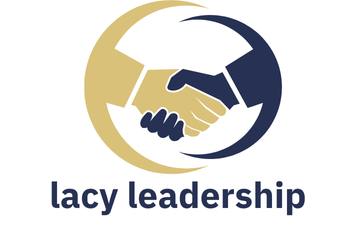Effective Strategies for Reducing Operational Costs: The Path to Financial Excellence
Modern gambling operators face mounting pressure to optimize their financial performance while maintaining competitive advantage. According to PwC’s 2024 Entertainment & Media Outlook, operational costs in the gaming sector have increased by 12% year-over-year, making strategic cost reduction essential for sustainable growth. How can your organization transform cost management from a defensive measure into a competitive advantage? The answer lies in comprehensive P&L cleaning and data-driven optimization strategies that preserve service quality while maximizing profitability.
Understanding the Foundation: Cost Optimization vs Traditional Cutting
The gambling industry faces a critical misconception that often leads to diminished performance and weakened market position. Traditional cost cutting operates like a blunt instrument, slashing expenses across departments without strategic consideration. This approach typically targets the most visible line items: reducing staff, cutting marketing budgets, or eliminating technology investments.
Also read : Essential Elements for Creating an Effective Brand Loyalty Program for a Retail Chain in Leeds
Strategic cost optimization follows a fundamentally different philosophy. Instead of arbitrary reductions, it examines each expense through the lens of value creation and competitive advantage. This methodology identifies inefficiencies while preserving and enhancing revenue-generating capabilities.
Consider two gambling operators facing margin pressure. The first reduces customer acquisition spending by 30% across all channels, immediately impacting player volume and long-term revenue. The second analyzes channel performance data, reallocates budget from underperforming segments to high-converting audiences, and actually increases profitability while maintaining growth trajectory.
Also to see : Mastering Customer Expectations: Proven Strategies for UK Consultancy Firms
The holistic approach examines interconnected business elements: player lifetime value, operational workflows, technology stack efficiency, and market positioning. This comprehensive analysis reveals optimization opportunities that traditional cutting methods completely miss, generating sustainable improvements rather than temporary relief.
Strategic Framework for Implementing Aggressive Cost Reduction Measures
Successful cost reduction in the gambling industry requires a systematic approach that balances aggressive savings with operational excellence. Our proven framework ensures maximum impact while preserving service quality and regulatory compliance.
- Diagnostic Phase: Comprehensive P&L analysis focusing on customer acquisition costs (CAC), lifetime value ratios, and operational efficiency metrics. Average gambling operators waste 15-25% of their budget on ineffective channels.
- KPI Analysis: Deep-dive into sector-specific metrics including player retention rates, bonus conversion efficiency, and marketing ROI by channel. Focus on metrics like cost per first-time depositor and monthly active user acquisition costs.
- Levier Identification: Systematic evaluation of high-impact areas including affiliate commission structures, payment processing fees, customer support automation, and technology stack optimization.
- Implementation Planning: Phased rollout strategy with risk mitigation protocols. Priority matrix based on savings potential versus implementation complexity, with typical timelines of 3-6 months for full deployment.
- Continuous Monitoring: Real-time dashboard tracking with weekly performance reviews. Key monitoring includes player churn rates, customer satisfaction scores, and operational efficiency indicators to ensure cost cuts don’t compromise growth.
Cross-Sector Excellence: Leveraging Multi-Industry Experience
The gambling industry shares more operational challenges with traditional sectors than most operators realize. Drawing from extensive experience across iGaming platforms, banking institutions, and retail operations, we bring proven optimization strategies that transcend industry boundaries while addressing the unique regulatory and operational constraints of gambling businesses.
Banking sector expertise proves invaluable when optimizing payment processing costs and fraud prevention systems for gambling operators. The sophisticated risk management frameworks developed for financial institutions translate directly to player verification processes and anti-money laundering compliance, often reducing operational overhead by 15-25% while maintaining regulatory standards.
Retail experience brings crucial insights into customer acquisition cost optimization and loyalty program efficiency. The multi-channel engagement strategies that drive profitability in competitive retail markets adapt seamlessly to gambling operations, particularly in managing the delicate balance between player retention and responsible gaming initiatives.
This cross-pollination of best practices enables gambling operators to implement cost reduction strategies that competitors using single-industry consultants simply cannot access, creating sustainable competitive advantages in an increasingly regulated marketplace.
Data-Driven Monitoring: Measuring Success and Avoiding Pitfalls
Successful cost reduction initiatives depend entirely on continuous monitoring and precise measurement of key performance indicators. Without proper tracking mechanisms, even the most well-intentioned optimization efforts can spiral into damaging cuts that erode service quality and customer satisfaction.
Critical metrics extend beyond simple cost savings percentages. Revenue per customer, customer acquisition costs, retention rates, and operational efficiency ratios provide the complete picture of your initiative’s true impact. These interconnected indicators reveal whether your reductions are strengthening or weakening your competitive position.
Advanced analytics and predictive modeling enable operators to anticipate potential risks before they materialize. Real-time dashboards displaying customer behavior patterns, service quality scores, and financial performance create early warning systems that prevent aggressive cuts from becoming costly mistakes.
The most successful operators establish baseline measurements before implementing any changes, then track progress through clearly defined milestones. This approach transforms cost reduction from reactive budget cutting into strategic optimization that enhances long-term profitability while preserving operational excellence.
Preserving Service Quality Through Smart Resource Allocation
The delicate balance between cost reduction and service excellence defines successful gambling operators in today’s competitive landscape. Smart resource allocation goes beyond simple budget cuts—it requires strategic redistribution of assets to maximize operational efficiency while maintaining player satisfaction standards.
Effective resource reallocation begins with identifying high-impact, low-cost initiatives. Customer support teams benefit from tiered service models where experienced agents handle complex inquiries while automated systems manage routine requests. This approach reduces labor costs by 15-25% without compromising response quality or player experience.
Process automation delivers significant savings when applied to repetitive back-office functions. Payment processing, compliance reporting, and basic account management tasks can be streamlined through intelligent automation, freeing skilled staff for revenue-generating activities like player retention and product development.
Critical process optimization focuses on identifying bottlenecks that drain resources without adding value. Regular performance audits reveal opportunities to consolidate vendor relationships, renegotiate contracts, and eliminate redundant systems. This systematic approach ensures every dollar spent directly contributes to operational excellence or competitive advantage.
Frequently Asked Questions about Cost Optimization

What are the most effective cost reduction strategies for gambling operators?
Focus on process automation, renegotiating supplier contracts, optimizing customer acquisition costs, and technology consolidation. Prioritize actions with a quick impact and measurable ROI.
How can I implement cost cutting measures without affecting service quality?
First, analyze your hidden costs and redundant processes. Invest in team training and continuous improvement. Constantly measure customer satisfaction during implementation.
What is the difference between cost optimization and cost reduction?
Reduction cuts expenses immediately. Optimization improves long-term efficiency by restructuring processes to maximize value while minimizing resource use.
How do you measure the success of cost reduction initiatives?
Track key KPIs: cost/revenue ratio, EBITDA margin, cost per acquisition, processing time. Use real-time dashboards for continuous monitoring.
What are the risks of aggressive cost cutting in the gambling industry?
Major risks: deteriorating customer experience, regulatory non-compliance, loss of key talent, reduced innovation capacity. A balanced approach preserves future growth while optimizing the present.











